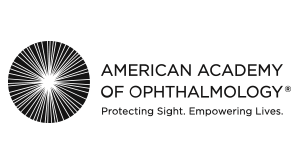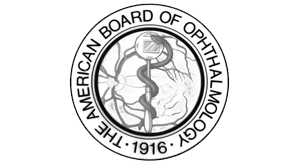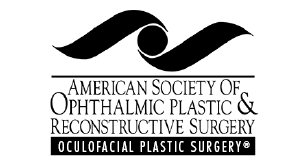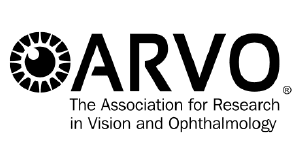This presentation was recorded at the 2024 TED Patient Forum: Overcoming Thyroid Eye Disease Presented by Kahana Oculoplastic & Orbital Surgery June 30, 2024 | Novi, Michigan
Jane Spadaro, MD, PharmD
Kahana Oculoplastic and Orbital Surgery
Dr. Jane Spadaro is a Board-eligible Ophthalmologist. She completed her residency at Yale School of Medicine. Originally from Pennsylvania, Dr. Spadaro earned a dual MD and PharmD degree from Rutgers Robert Wood Johnson Medical School, graduating at the top of her class and inducted into the Alpha Omega Alpha medical honor society.
Dr. Spadaro has contributed significantly to her field, authoring numerous papers in peer-reviewed journals like Ophthalmic Plastic & Reconstructive Surgery and Orbit. She also wrote a book chapter on Thyroid Eye Disease for the International Ophthalmology Clinics and has presented at various professional meetings and events, including the ASOPRS annual meeting.
SUMMARY:
Clinical Trials for TED: Teprotumumab (Tepezza) and Beyond
What are Clinical Trials?
Clinical trials are studies where patients voluntarily participate in trials of new medical, surgical, or behavioral interventions, to ensure these new interventions are safe and efficacious. In the United States, federal law requires that new medications must be proven safe and effective before becoming commercially available.
The NIH (National Institute of Health) and the FDA have strict guidelines for conducting clinical trials.
Clinical research and trials can be sponsored by various organizations:
- Biotech companies
- Pharmaceutical companies
- Hospitals
- Federal agencies
- Investigative physician initiatives
Clinical trials can be conducted in various settings:
- Universities
- Hospitals
- Clinics (e.g., Kahana Oculoplastic and Orbital Surgery’s Livonia, Michigan office)
Timeline of Clinical Research
1. Pre-clinical/Basic Science Research
- Years of studies before human trials
- Scientists study molecular cascades and potential targets
- Testing in cell lines, tissues, and animal models
- Results compiled into an FDA application
2. Clinical Trials Phases
- Phase 1: Small group of healthy volunteers to assess safety
- Phase 2: Patients with the condition to assess efficacy
- Phase 3: Larger patient population for extended testing
3. FDA Approval Process
- FDA Review
- Post-approval research and monitoring
Clinical Research for Thyroid Eye Disease
Statistics on Drug Development
- Approximately 1 in 5,000 compounds make it through to the final phase
- The process takes about 15 years
- Cost ranges from $1 to $2.5 billion per product
Tepezza (Teprotumumab) Development
- Initially studied as an oncology medication
- Phase 1 studies began in 2006
- Approved in January 2020
- Fast-tracked and given orphan disease status
Thyroid Eye Disease (TED) Epidemiology
- Incidence in men: 3 out of 100,000
- Incidence in women: 16 out of 100,000
- For comparison:
- Breast cancer incidence: 129 out of 100,000 women
- Hypertension: Approximately 1 in 4 adults in the US
Current Clinical Research in TED
Multiple targets and medications are being studied:
- IGF-1R pathway (various formulations)
- IgG pathway
- Interleukin 17, 6, 11 pathways
- Different administration methods (IV, oral, subcutaneous)
Kahana Oculoplastic Surgery’s Involvement
- Participating in several clinical studies
- Active enrollment in studies by Viridian Therapeutics, Acelyrin, Immunovant, Sling, Tourmaline, and Lassen
- Two full-time clinical trial coordinators
- Still prescribing Tepezza alongside new treatments
Why Participate in Clinical Trials?
- Access to new treatments not yet commercially available
- Alternative when standard treatments haven’t worked
- Potential solution for insurance coverage issues
- Contribute to scientific discovery
For More Information
- Visit www.clinicaltrials.gov
- Consult with your healthcare provider
TRANSCRIPT:
Clinical Research for TED: Teprotumumab (Tepezza) and Beyond
Hello, everyone. Thank you so much for taking the time to be here this afternoon with us. The talk is called Teprotumumab and Beyond. I think I’m very, very happy to be working with Doctor Kahana on this clinical studies. I think it’s very inspiring and it’s an amazing time to see what’s coming in the future for thyroid eye disease.
I have no financial disclosures.
So foremost, when we talk about clinical research, the question becomes, what is clinical research? Why is this important?
Clinical research, these are voluntary studies that patients participate in to study a new medication, new intervention, and to make sure that it’s safe and efficacious. And the reason why it’s important is because in the US federal law says that for a new medication to be commercially available to the public, we have to show that it’s safe and we have to show that it works.
The NIH, National Institute of Health, and the FDA have very strict and vigorous guidelines for how these studies are conducted. And they can be sponsored by different organizations: biotech, pharmaceutical companies, hospitals, federal agencies, or even investigative physician initiative. And then they’re conducted at a wide variety of settings as well. So they can be conducted at university, a hospital, or even at KOOS in our Livonia office in our clinic.
Now, here I just want to briefly walk through a timeline of what clinical research looks like. And starting on the left. The goal is really to get a medication, a product available for patients at the end. So before any medication can be given to a patient, there’s lots of years of clinical research, studies behind it. We call this pre-clinical or basic science research. And there are scientists who dedicate their lives looking at thyroid eye disease, the molecular cascade, which targets are we going to intervene in?
And the best way to kind of represent what this looks like is a lock and key mechanism. There’s a lock where it targets that will be one key treatment, and there’s thousands of compounds and keys that get tried out to see which lock and key mechanism fit best. And ultimately, these get tested in different cell lines, in tissues that mimic orbital tissues, in animal models. And eventually this all gets wrapped up in a big application. It’s like the biggest science report you’ve ever seen in your life, hundreds of pages long, and gets submitted to the FDA. And when they get to go ahead and say, yes, you like what you like, we see, if this is promising, then we can start clinical research before it can be given to that patient.
So the phases of clinical trials, you may have heard phase one, phase two, phase three, what does it really mean?
So in phase one clinical trials, these are studies that are conducted in healthy volunteers. It’s usually a small group and the goal is to look at how safe is this medication when given to patients. And that’s foremost the priority.
If everything checks out, then, then we can move to a phase two study where now it’s given to patients with a disease condition. So now given to thyroid eye disease patients. And here we’re looking at how well does the medication work in treating TED. The primary outcomes that really get looked at for the clinical studies that are coming out are reduction in proptosis. How much of that bulging of the eyes does it help with? What is the clinical activity school of reduction like? How much does it help the pain behind the eyes, the swelling, the inflammation.
And then if everything was stood, then it can move on to a phase three study where it gets looked at in a much wider patient population. These studies can take many years, it can be performed hundreds of thousands of patients, and it’s really to make sure, is there any, does the preliminary data match what we’re seeing?
And then after all of that, it gets repackaged again. All the patient information is anonymized and it gets packaged again to the FDA for their approval. After that, you would think that we’re done, but no. It still gets looked at and monitored by the FDA. So currently Tepezza is in a close space for, we call closed marketing, where it’s commercially available and it’s really to look for are there any untoward side effects that are still coming out? Because we want to make sure foremost safety is the main thing.
So to give an idea of what this really takes, approximately one in 5,000 compounds, when kept with the lock and key, the keys really make it through to the final phase of this, before it becomes commercially available. The process takes 15 years. I think it’s taking longer and longer every year because of the complexity of what it really takes. And the cost is staggering. Anywhere from one to two and a half billion dollars per product.
So what does this look like for Tepezza? When Tepezza was first studied in the lab, it was actually looked out for as an oncology medication. It was one of those keys that was tested and somehow scientists found that it worked really well for orbital tissues and decreased orbital inflammation. The phase one studies, when it was first used, given to patients, was back in 2006, almost two decades ago. And it was finally approved in January of 2020. And interestingly enough, this drug was actually fast tracked and it was given what we call orphan disease status because this was the first medication in an unmet therapeutic disease area.
So, if you think about the timeline of what a fast track drug looks like, it gives me an idea of what we’re looking at today, maybe something that’s just coming down in the future.
So I get a question a lot. Why are there not more drugs for thyroid disease? Why is it just Tepezza? Part of it has to do with how rare the disease is. If you look at the epidemiology, the incidence of TED for men is 3 out of 100,000 men. For women, it’s 16 out of 100,000 women. To put this into context, the incidence of breast cancer for women is 129 women out of 100,000. And if you think about how many patients get diagnosed with high blood pressure or hypertension, it’s probably 1 out of 4 adults in the US. The disease is also very variable in our presents, doctor Brown mentioned 40% to 50% of patients with prednisolation. It’s not everyone has same manifestations, and often the diagnosis is delayed.
So this is a quote that I found in one of my papers I was looking at about TED, and it really echoes what a lot of us as providers feel about the disease error as well. There’s really an unmet need for good treatment that has good safety and good long term benefits.
Okay, so, moving back to thyroid eye disease, we talked about that there’s a lot of different targets that are now being looked at, and this is really represented by the diversity of the clinical research and studies that are now available on the market.
So this is a really busy table. I’m going to go over it very briefly, but essentially what I’ve listed is, on the left, the name of the products that are coming out. And you can see some of these only have letters. VRDN-001 Drugs aren’t given a formal brand name until it’s approved by the FDA. So sometimes it’s just letters are the name of the compound. I have the name of the pharmaceutical company that produces the medication, the target, and how is it administered.
So, we know that Tepezza affects the insulin growth factor one receptor. It’s given as an IV medication, so it’s directly into the vein. There are now medications that are now targeting the IG-1R pathway. So the same pathway, but given different formulations. So there’s one study that is looking at a pill for that’s given twice a day. There’s another study that’s looking at this same target, but given as a subcutaneous injection. So it’s a medication given directly under the skin similar to insulin or Ozempic. And then there’s a lot of other targets being looked at as well. The IgG pathway, the interleukin 17, 6, 11 pathway. I can go on. But don’t let me.
So at Kahana Oculoplastic Surgery we are involved in several clinical studies. We’ve had patients who have completed the studies. We have patients that we’re actively enrolling or involved with the Viridian Therapeutics, Acelyrin, Immunovant, Sling, Tourmaline, and Lassen studies. We have two full time clinical trial coordinators who really support us and help us with this. But I will say we are still prescribing a lot of Trepezza as well. What this has allowed us to do is, it has allowed us to become more nuanced and individualized in how we treat patients. If we’re affecting a different pathway, a different target, the side effect profile is different and it really allows us to individualize how we treat our patients. And that’s what I really love about it. But don’t worry, we’re keeping Sara busy with our Trepezza authorizations still.
So why do patients participate in some trials? If you’re thinking about it, or if you’re thinking about, you know, if you have a loved one. Well, you gain access to new treatments that have been shown to be safe and work well that are just not commercially available yet to the public. Perhaps none of the current standard treatments have worked or the side effects just don’t work for you. Insurance. We know in Michigan that certain insurance companies are just more tricky than others in your prior authorization. Or lastly, you just want to help others and health advanced scientific discovery.
Okay, so for more information about clinical trials, the NIH is the website www.clinicaltrials.gov that gives more in depth information. And of course, you can always ask one of us as well.
And that’s it. Thank you.





